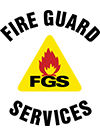Fire Guard Services
Fire Extinguisher Servicing
Fire extinguishers are a key component of a premises’ fire safety strategy and must be accessible and in perfect working order at all times. Fire extinguishers are used to control or extinguish small fires, and their regular maintenance is part of British fire safety regulations under The Regulatory Reform (Fire Safety) Order 2005. Our highly trained fire extinguisher engineers are FIA (Fire Industry Association), and BAFE (British Association of Fire Engineers) trained.
Fire Extinguisher inspection and maintenance
Under the British Standards code of practice for fire extinguishers (BS 5306), extinguishers must be regularly serviced to ensure they are in good working order.
A service must be carried out annually, we recommend this is carried out alongside your fire alarm service.
A maintenance contract is the most reliable way to keep your fire extinguishers in tip-top condition and fully operational.
Contact us for Fire Extinguisher Advice
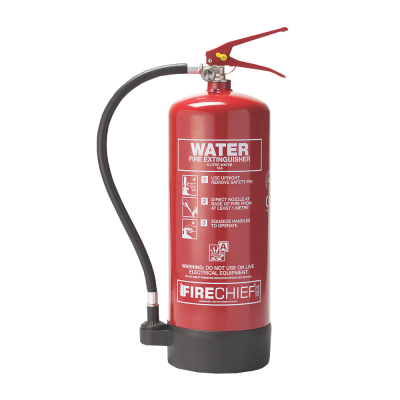
Water Fire Extinguisher
A water fire extinguisher is usually labelled with a white label that says “WATER”. Water fire extinguishers have a class A rating and are safe for use on wood, paper and fabric fires.
A water extinguisher is NOT suitable for:
- Flammable liquids, such as oil, as it will not be able to extinguish the fire and could potentially cause an explosion
- Electrical fires, as using a water fire extinguisher on an electrical fire puts the user at risk of electrocution
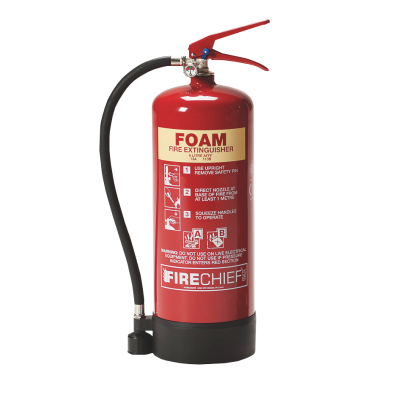
Foam Fire Extinguisher
A foam extinguisher is identifiable by a cream coloured label that reads “FOAM”. These can be used for wood, paper and fabric fires. Foam extinguishers are also safe to use on flammable liquid fires.
The use of a foam fire extinguisher is NOT suitable for:
- Electrical fires
- Flammable metal fires
Using a foam fire extinguisher on these types of fires can actually exacerbate a fire, instead of extinguishing it.
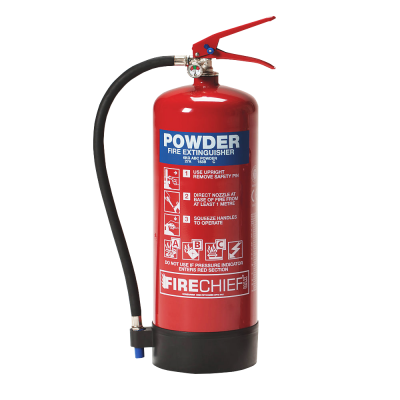
Powder Fire Extinguisher
A powder fire extinguisher can be identified by a blue label that says “POWDER”. Powder extinguishers can be used on wood, paper and fabric fires. They can also be used on flammable liquid fires, gaseous fires and even electrical fires and are recommended for use in plant and boiler rooms. They should not be used in enclosed spaces and it is best to install them after a risk assessment for the building has been completed.
Powder extinguishers CANNOT be used on:
- Fires involving cooking oil (such as pan fires)
- Fires involving electrical equipment that exceed 1000v
- Fires in enclosed spaces
- Fires involving flammable metals (unless it is a “specialist” dry powder extinguisher)
In these circumstances, the use of powder fire extinguishers can exacerbate the fire rather than extinguish it.

Wet Chemical Fire Extinguisher
A wet chemical fire extinguisher can be identified by a yellow label that states “Wet Chemical”. Wet chemical extinguishers can be used on wood, paper and fabric fires. They are mainly used for cooking and deep fat fryer fires.
Wet chemical extinguishers are NOT suitable for:
- Electrical fires
- Flammable liquid fires
- Gaseous fires
Again, in these circumstances, the use of wet fire extinguishers can escalate a fire rather than extinguish it.
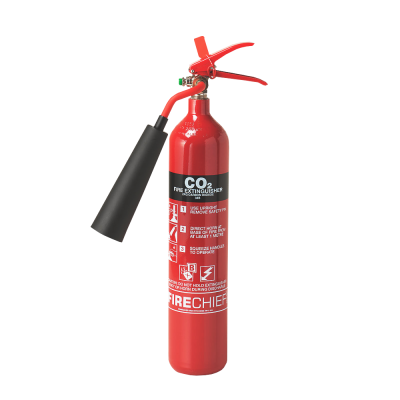
CO2 Fire Extinguisher
CO2 fire extinguishers can be identified by a black label reading “CO2”. CO2 fire extinguishers are safe for use on flammable liquid fires and electrical fires.
CO2 extinguishers are NOT suitable for use on:
- Wood fires
- Paper fires
- Fabric fires
- Cooking fires that involve oil and grease (such as chip pan fires) as the extinguisher could end up blasting the flames into the surrounding area
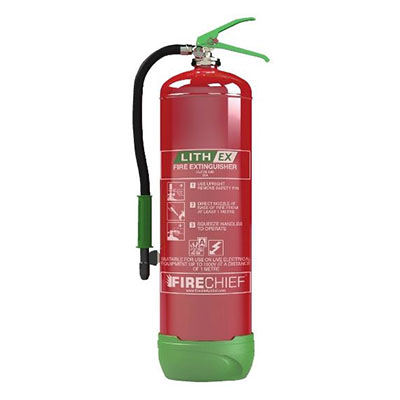
Lithium-Ion Extinguisher
Lithium-ion extinguishers are used for extinguishing fires caused by Lithium-Ion batteries. Lithium-Ion batteries are usually found in devices such as mobile phones, laptops, and power banks.
Other devices can include:
- Electric bikes
- UPS backup systems
- Charging stations
- Power tools
Lithium-Ion fire extinguishers are also suitable for Class A fires and electrical fires, but are NOT suitable for Class B, C, D, or F fires.
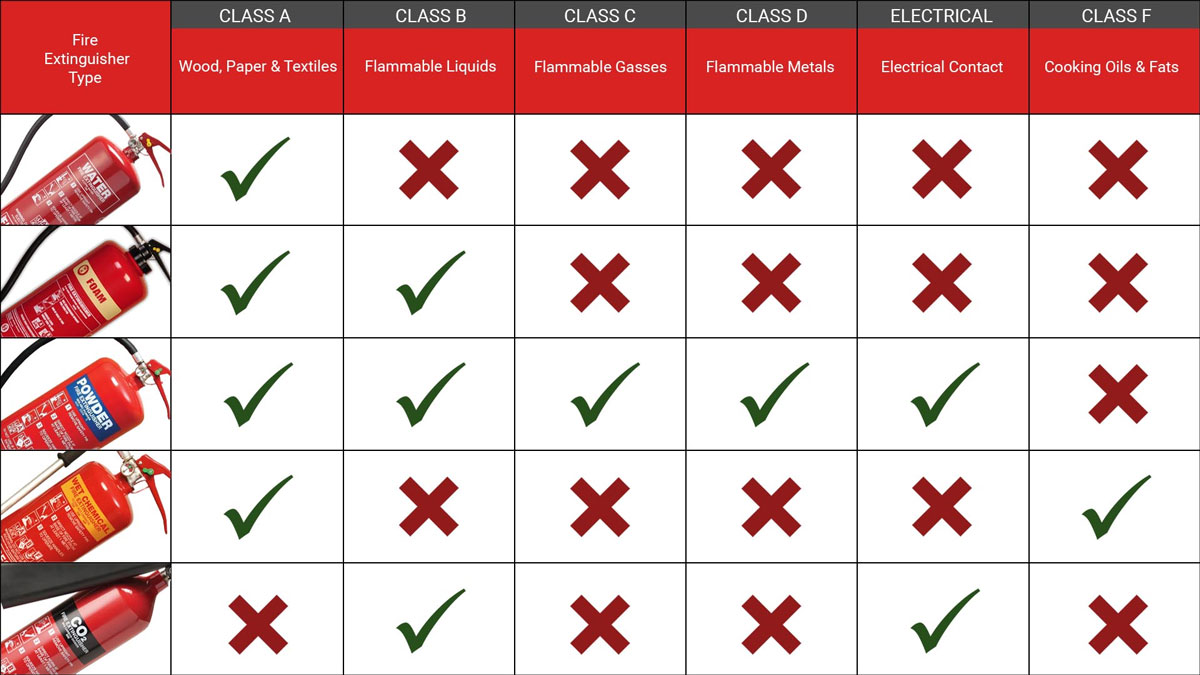
Contact us to order your Fire Extinguishers
Your Fire Extinguisher Questions Answered
Fire extinguishers are an essential part of any fire safety system and must be tested regularly in order to comply with legal requirements and to ensure they are working correctly.
We also understand that business owners may have questions about fire extinguishers. That’s why we’ve created this short FAQ to answer some of your questions.
The UK servicing standard BS 5306-3 puts the responsibility on the user (i.e. the company) to use a competent person to perform the annual inspections, install, commission (skilled checks made to the extinguisher on-site), service and test discharge fire extinguishers.
Fire extinguishers should never be stored near heat sources such as stoves, generators, or fireplaces. Extinguishers should be kept in temperatures between -40 and 120 degrees Fahrenheit to avoid serious damage to the hose, valve, or tank.
BS5306 recommends that fire extinguishers are tested by discharge every five years (water, foam and powder) and refilled or replaced every ten years (CO2). CO2 extinguishers are sent away to be pressure tested.
